Little more than a month ago, we released version 0.6 beta of Scrite with major new features on the Structure canvas.
Version 0.6 has been one of our most successful versions to date. Close to 20% of our entire user base is now on version 0.6. We acquired almost 300 new users with this version and 36% of our existing users from previous version have upgraded to this version.
On 17th April, we celebrate the first year anniversary of the first public beta of Scrite. It was on 17th April 2020 – the first public beta of Scrite was released. We have since had close to 2500 writers from all over the world enjoy using Scrite for their screenwriting projects.
Version 0.6.2 beta is an incremental update that mostly brings stability and performance improvements to the 0.6 code base.
If you just want to update to the latest version, then you can click on the button below.
We encourage you to take a look at the new features, enhancements and bug fixes bundled in this update.
As always, please leave your feedback on the Forum. It is because of all the feedback that the app is improving with each update.
New Features
Export Structure to PDF
It is now possible to export Structure canvas contents to PDF. In this iteration we export the entire structure as a single page PDF file. In a future iteration we will offer multi-page export like the way you can in Excel, for example.
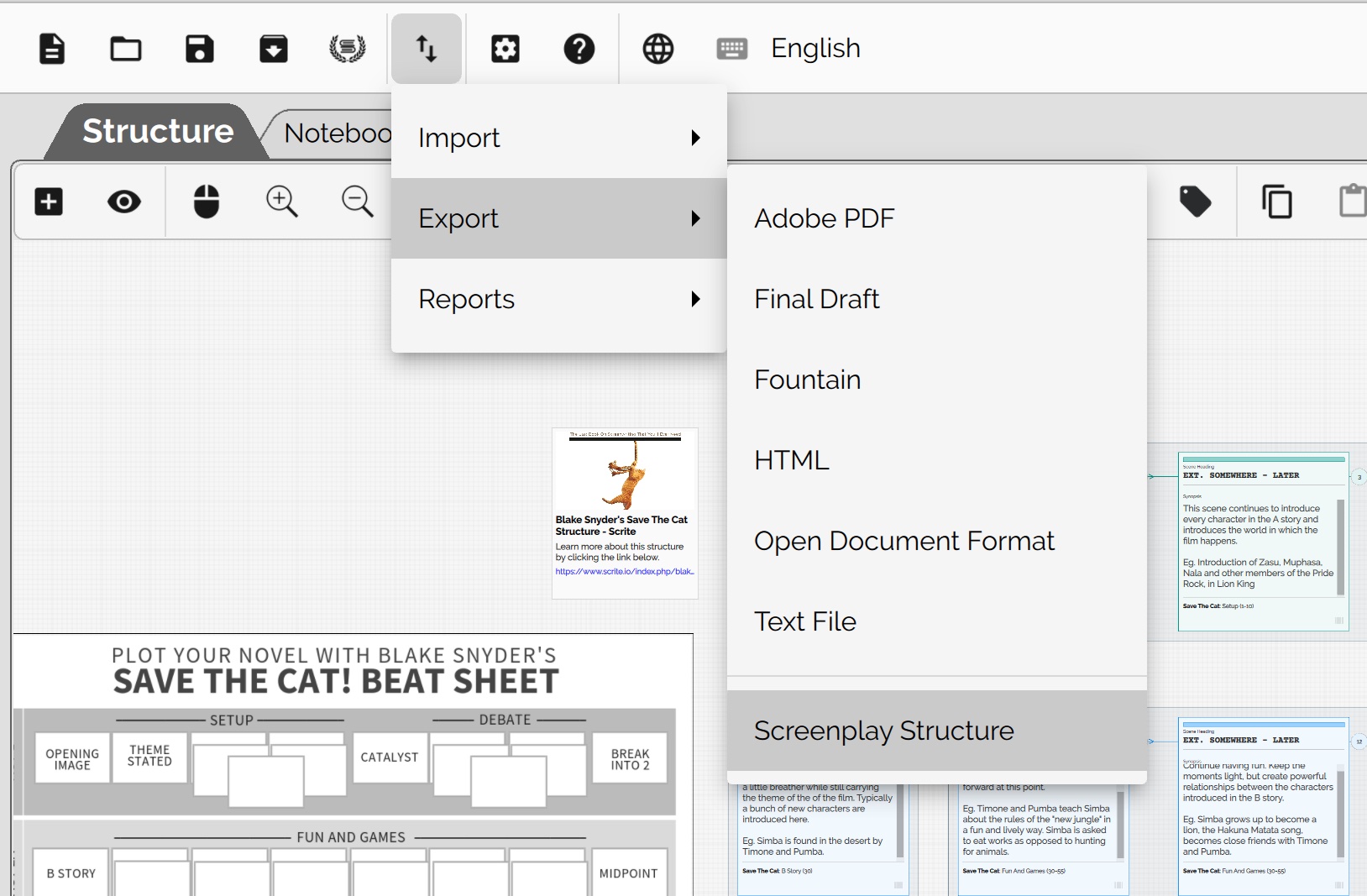
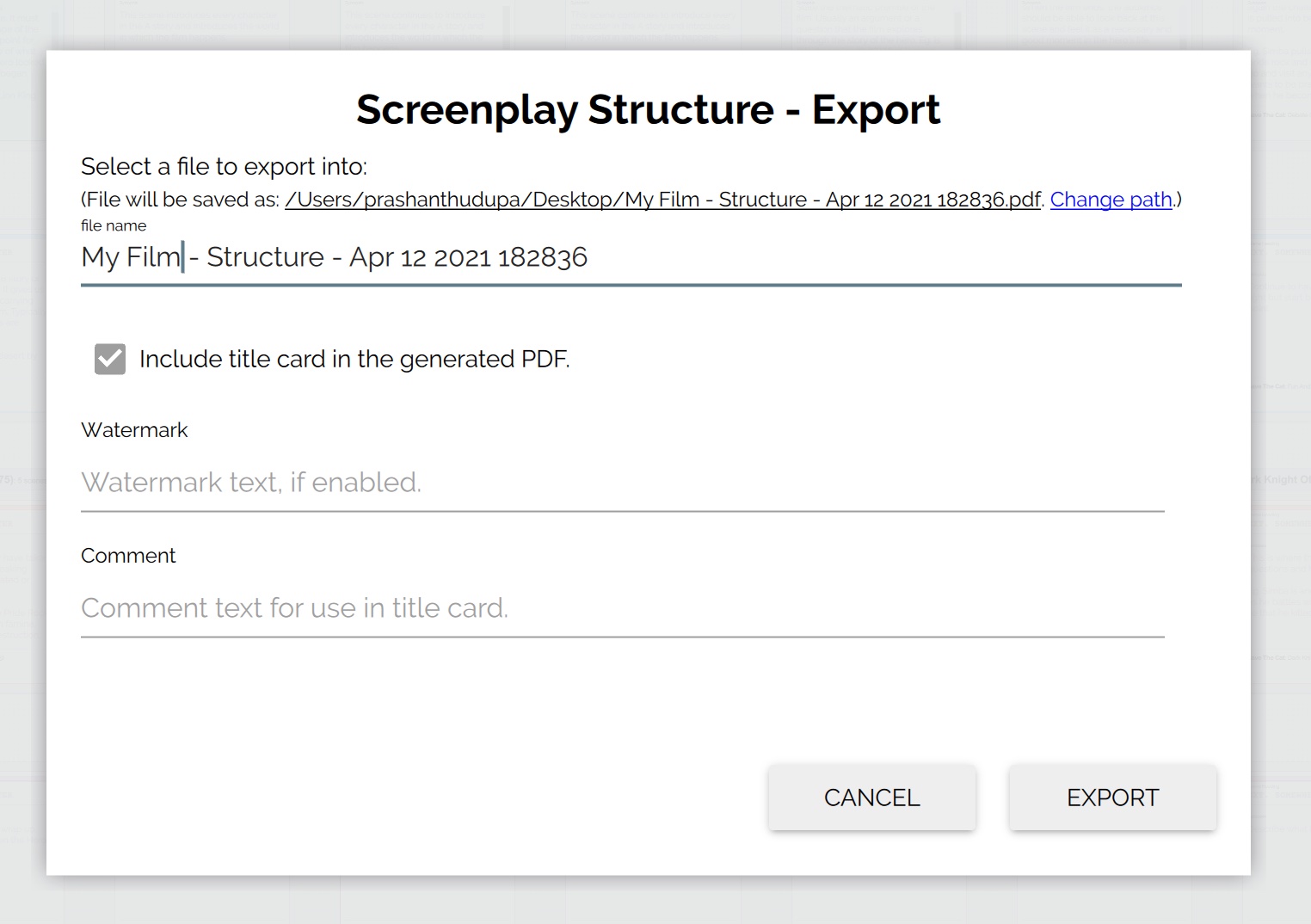
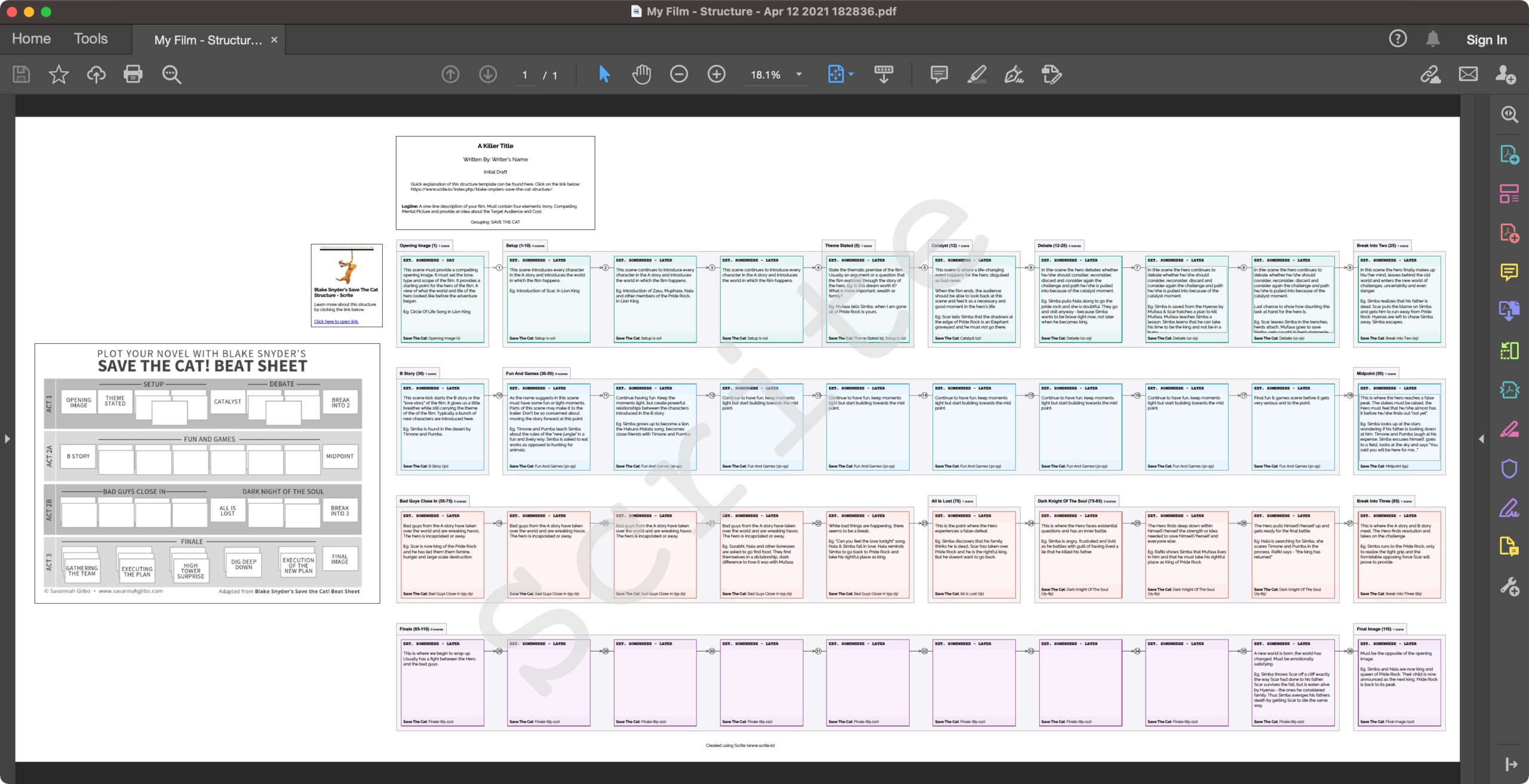
Notice how structure exported on the PDF continues to hold all the structural elements, exactly the way you see on the structure canvas.
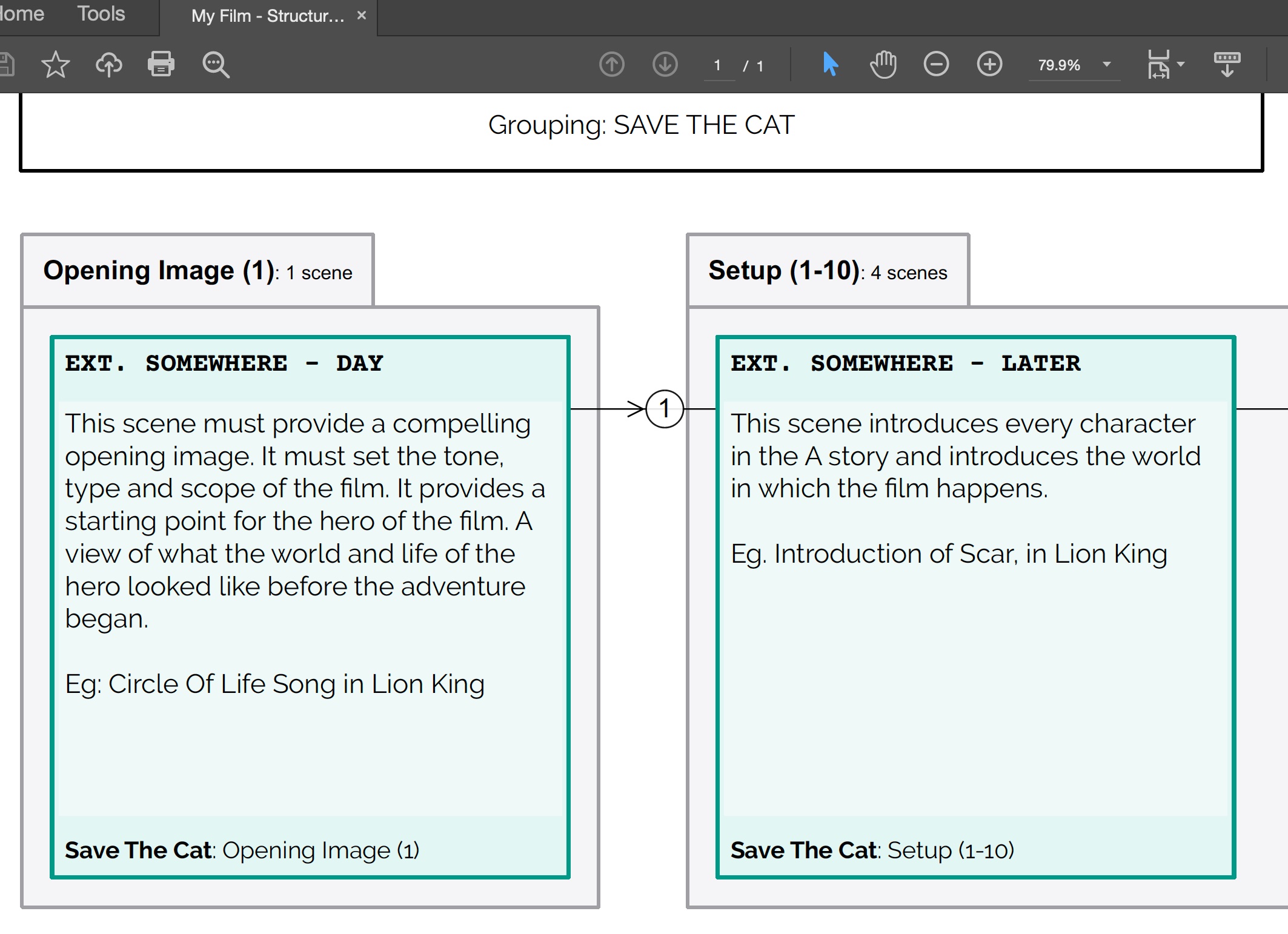
Structure canvas exported to PDF using Scrite embeds images on the canvas as is, which can make PDF files large. Otherwise the PDF file size is reasonable enough to be able to share on WhatsApp, Telegram or Signal.
Episode Breaks
Some of our users are using Scrite to write web-series. With this version we are beginning to put together features to help plot multiple episodes of a web-series in a single Scrite document.
Just like you can add act breaks, you can now also add episode breaks. To add an episode break you can use the key-combination Ctrl+Shift+P (on macOS Cmd+Shift+P) or tap on the plus button in the timeline and select Episode.

This causes an episode break to be added right after the current scene.
Each episode is considered to have its own Act 1, Act 2, Act 3 and so on. This means that if you write your episodes using the 3-act structure, then the first act break in episode 2 will be Act 1 and not Act 4.
On the structure canvas each episode will have its own group box. And you can tag structural elements separately for each act in every episode.
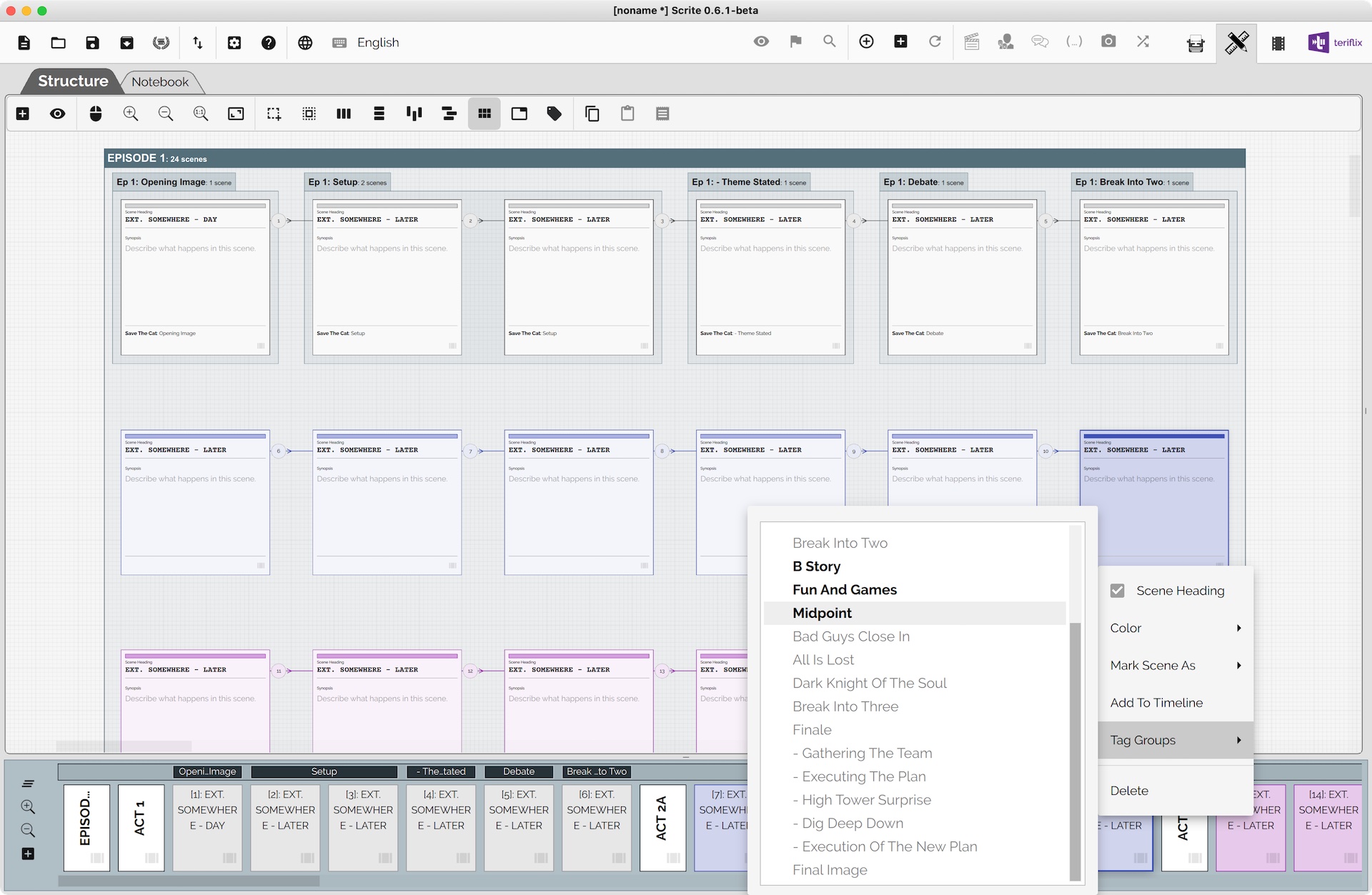
When the structure canvas with episode breaks is exported, each episode will be shown within its own box.
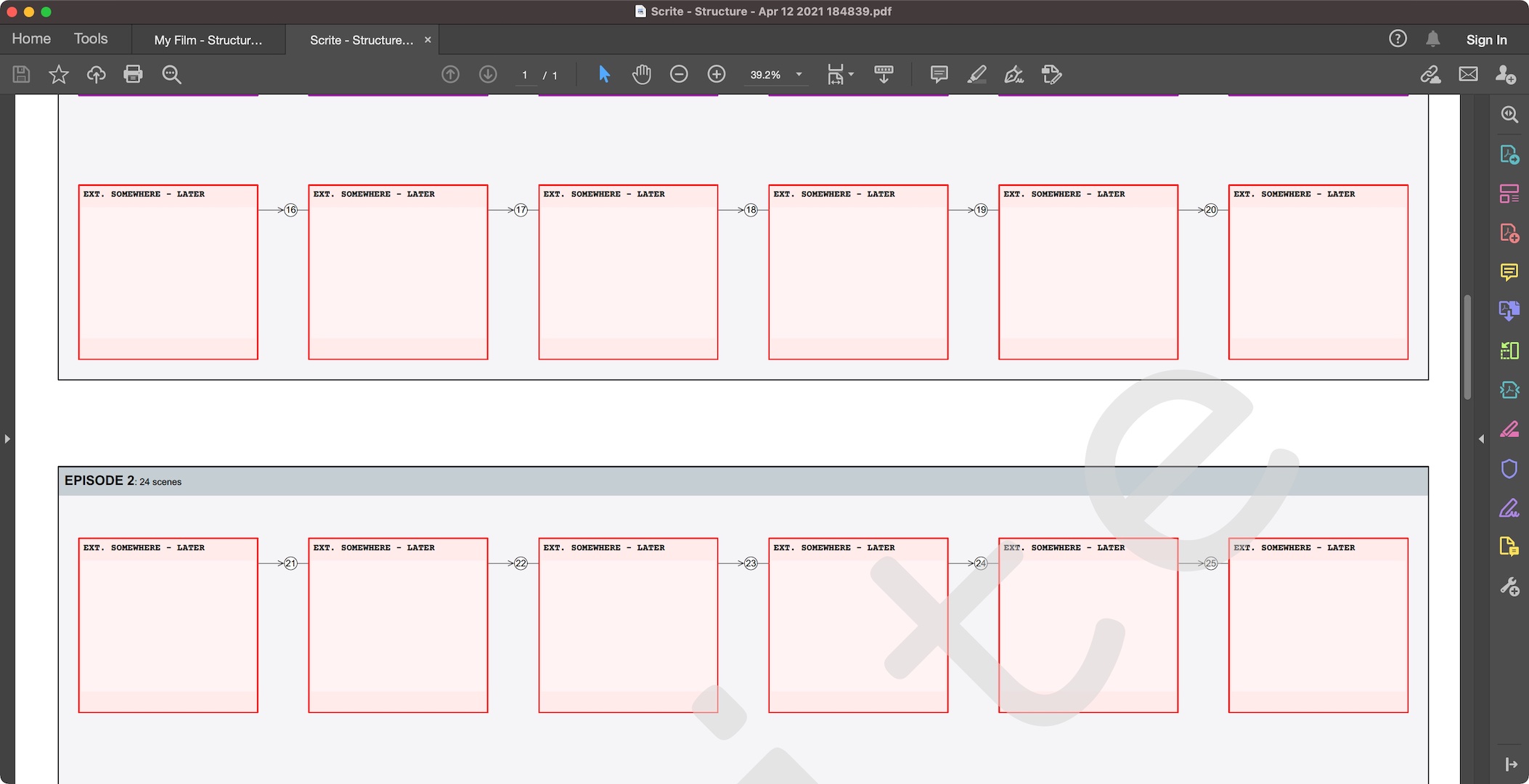
While exporting screenplays with multiple episodes to a PDF file, each episode will begin on a new page.
In a future update, we plan to provide support for visually tracing story threads across episodes; along with being able to track (in real time) metrics like episode page count, episode time length.
Auto Completion Popup
This was a long pending feature request. Previously, while typing a scene heading or character name, Scrite would show the most appropriate auto-complete suggestion in a tooltip. Now it shows in a popup menu. You can use the up/down arrow keys to select the most appropriate option and hit Enter to use it.
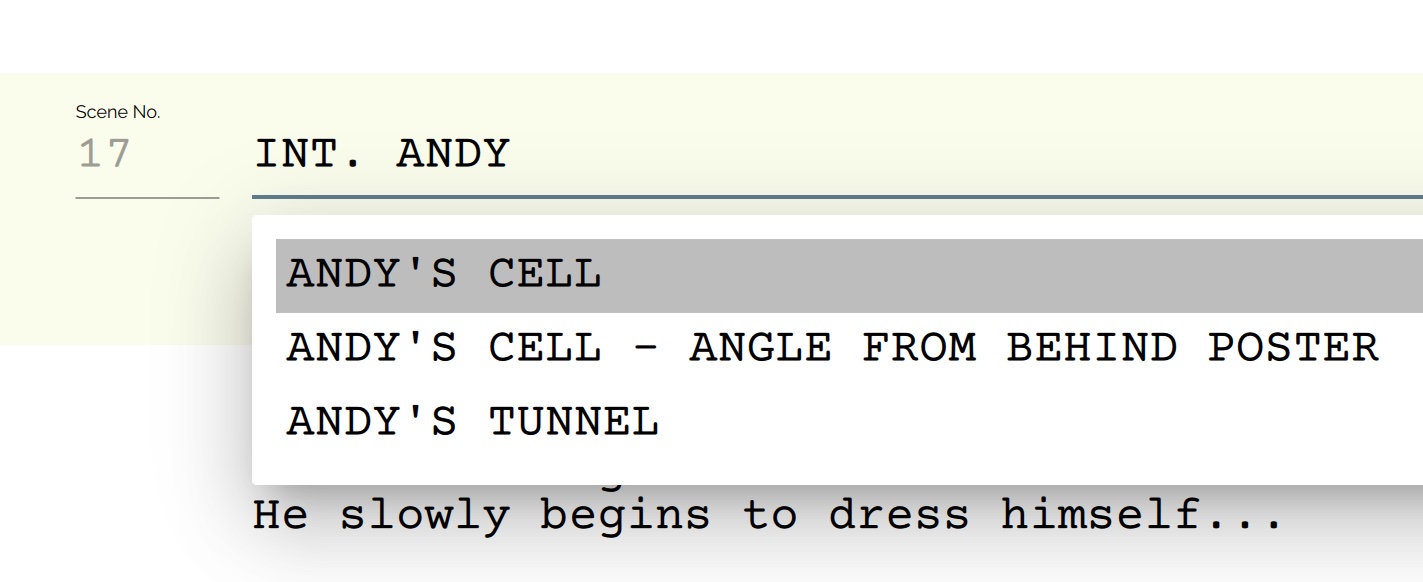
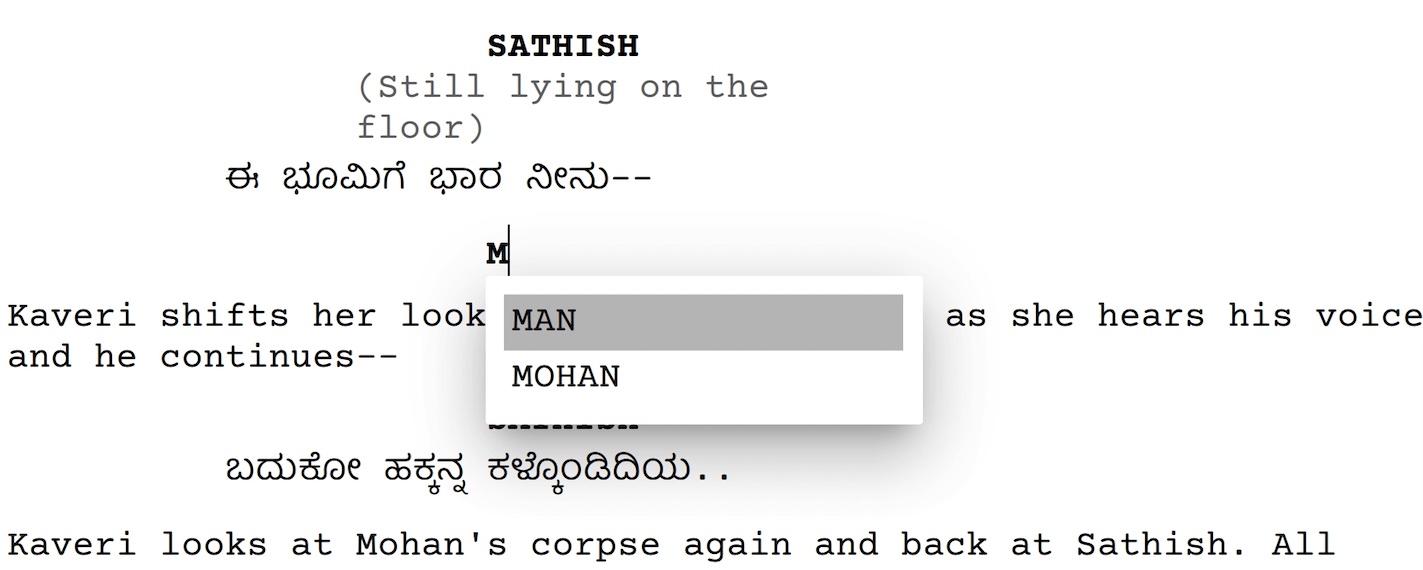
Title Page Fields Are Saved
This was a feature request by one of our users. Previously one had to enter all the title page fields, including Author name and contact details. Now these details are auto-saved the first time you type something into them and are reused for every subsequent screenplay.
Please review this thread on the forum to know more details.
Improvements
Per Episode Reports
Since this version brings episode breaks to life, we figured that it would be best if users were able to extract per-episode character and screenplay subset report.
When you generate a Screenplay Subset Report in version 0.6.2 for example, you will notice a new panel on the report generator dialog box called “Episodes”
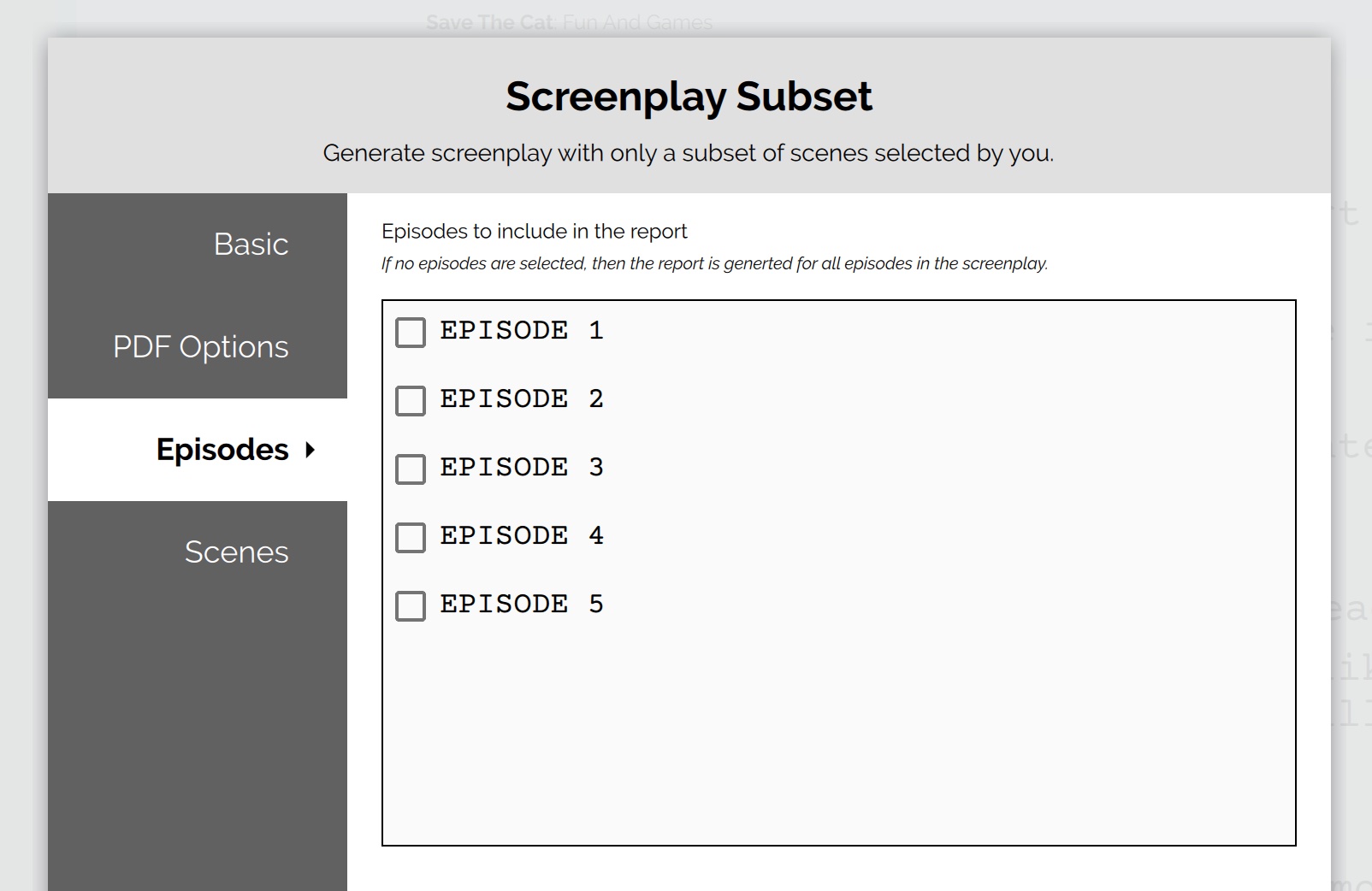
In this panel, you can select one or more episodes and extract scenes only belonging to those episodes. If none of the episodes are selected, then all episodes are included.
Keyboard shortcut to switch to Scene Heading
While editing a scene, you can now use the keyboard combination “Ctrl+0” (on Mac it is Cmd+0) to switch to the current scene’s heading. After editing the scene heading, you can hit Enter (or Return) to go back to the cursor in the scene text editor.
Typing speed improvement in large screenplays
While working on large screenplays, especially those with large paragraphs that were a mix of English and Indian fonts, users were complaining that adding / removing paragraphs was very slow.
We ran a few profiling tools to get to the bottom of this and found out some parts of the code where were handling page lay-outing inefficiently.
We have now optimized those parts of the code. As a result the typing speed is much better than it used to be.
Panning Speed Improvements In Structure Canvas
If your structure canvas had stacked index cards, then panning was abysmally slow. This issue has now been fixed.
Bug Fixes
Screenplay Subset Report Was Selecting All Subscenes
This bug was reported by a user. While exporting a report with subscenes, selecting Scene 1A, automatically checked 1A, 1B & 2; but not 1.

This issue has now been fixed. You can now select 1, 1A, 1B separately.
Fixed a crash in split / merge scene workflow.
This was also a bug reported by one of our users. Sometimes splitting a scene or merging two scenes would cause the app to crash. That issue has now been resolved.
Spelling mistake in the UI
A user reported this bug on the Forum.
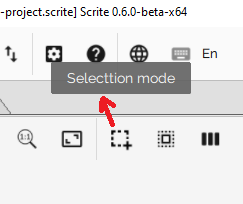
Its a a minor thing, but needs fixing anyway. Thanks Harpreeth for reporting this.
Find would highlight search result only from the second instance onwards.
While using Find function in the screenplay editor, the first search result was not getting highlighted. Only from the second instance onwards the highlight would work. This has now been fixed.
Cursor stays put after a paste operation
Every other app moves the cursor to the end of the pasted segment, but Scrite would retain the cursor position after a paste operation. This was obviously a bug and is now fixed.
FDX files generated on macOS were huge!
Some of our Mac users reported that screenplays exported from Scrite to Final Draft format were huge. This was because the exporter was unfortunately categorizing spaces and punctuation as separate characters and was hence marking them distinctly in the exported file. This issue has now been fixed.
Cursor time would be displayed on the toolbar, even when screenplay editor was collapsed.
On the Structure canvas it is possible to collapse the screenplay editor by moving the splitter handle that separates the canvas and editor areas. Even after the editor was completely collapsed, Scrite would continue showing the cursor time on the toolbar which doesn’t make sense. This issue has now been fixed.
Download/Update Now!
Like we mentioned before, version 0.6.2 beta is an incremental update that mostly brings stability and performance improvements to the 0.6 code base.
As always, please leave your feedback on the Forum. It is because of all the feedback that the app is improving with each update.